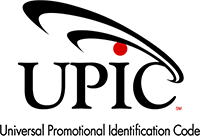Here you'll find answers to common questions our clients ask. Start by selecting one of the links below. If you don’t see what you need – call or contact us online.
- What type of products and services do you provide?
- Why do the printed colors look different from the colors on my screen?
- At what resolution should I save my photos and graphics?
- What is a proof and why is it important that I look at it?
- What is the Pantone Matching System?
- What file format should I use when submitting my electronic document for printing?
- Once I submit the documents, how long will it take to finish my job?
-
We are a full service shop and offer a wide range of products and services right in-house. And if we can't do your project here, we have many vendors we deal with so we truly are a "one-stop" shop!
To see a full listing and descriptions of what we can offer you, check out the Products & Services area in the Customer Service Section of our web site. -
Why do the printed colors look different from the colors on my screen?
In short, printing presses and monitors produce colors in different ways.
Monitors use the RGB (red, green, blue) color model, which supports a wider spectrum of colors. Presses use the CMYK (cyan, magenta, yellow, black) color model for full-color printing, which can reproduce most—but not all—of the colors in the RGB color model. When printing just one, two or three colors we use spot colors based on the Pantone Matching System. When proofing these colors on your screen, oftentimes the colors will not match.
When a color is selected from the RGB model that is out of the range of the CMYK model, the application chooses what it thinks is the closest color that will match. Programs like Adobe Photoshop will allow you to choose which color will be replaced. Others may not.
-
At what resolution should I save my photos and graphics?
Resolution for photos should be set to 300 dpi at actual size being printed. Bitmap graphics should be 1200 dpi at actual size.
Pictures and graphics pulled from the internet are often low resolution, typically 72 dpi or 96 dpi. Avoid these graphics, as they will appear pixilated and blocky when printed.
Also note that you should save all photos in CMYK mode, not RGB mode when possible. Images saved in RGB mode may look very different when printed using CMYK. If you are unable to save your image in CYMK mode, please let us know.
-
What is a proof and why is it important that I look at it?
In printing terms, a proof is a virtual copy (or hard copy) of your job after it has been worked on in our art dept. It is your opportunity to ensure that your job looks exactly the way you want. By carefully inspecting the proof, you can help us assure an accurate, flawless delivery of your print job on the first run.
-
What is the Pantone Matching System?
The Pantone Matching System (PMS) is a color reproduction standard in which colors all across the spectrum are each identified by a unique, independent number. The use of PMS allows us to precisely match colors and maintain color consistency throughout the printing process.
-
What file format should I use when submitting my electronic document for printing?
PDF (Portable Document Format) is the easiest and most hassle-free file format for submitting files to us. If you are laying out your file in an Office program, see this article to learn how to create a print-ready PDF: https://support.office.com/en-US/article/Save-as-PDF-D85416C5-7D77-4FD6-A216-6F4BF7C7C110.
-
Once I submit the documents, how long will it take to finish my job?
We can usually get a proof to you within a day. After the proof is approved, most jobs can be completed in a few days. The more complex the job, the more time we need to complete it. And we’ll always work with you to find ways to complete your project when you need it.



